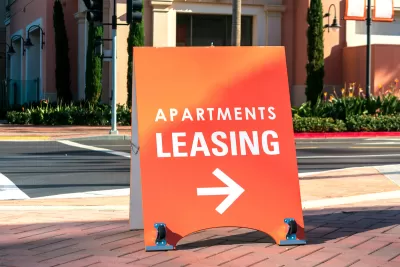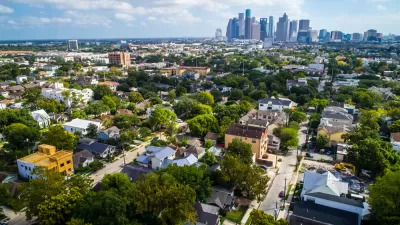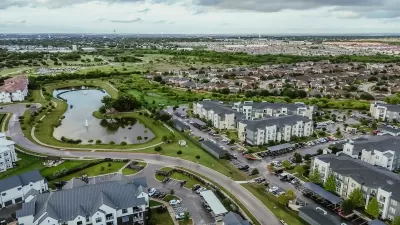A record number of renter households struggle to afford housing costs.

Half of renter households in the United States now spend more than 30 percent of their income on housing, according to a study from Harvard’s Joint Center for Housing Studies. As Jennifer Ludden explains in an article for NPR, this is a record number of households that are considered ‘cost burdened.’
“Since 2019, the biggest jump in unaffordability was for households making $30,000 to $74,999 a year. Even among those working full time, a third of all renters were still cost-burdened,” the study found. Of renters making less than $30,000 per year, 83 percent are cost-burdened. Accordingly, homelessness rates have spiked around the country, especially now that many pandemic-era eviction moratoriums and other protections have lapsed.
Ludden points out that “The double-digit rent hikes of the past few years are finally easing, and rents have even come down in some cities that saw the biggest jumps. A record number of apartments are also under construction, and as they come online, tight vacancy rates will loosen.” But the construction boom likely won’t bring costs down to pre-pandemic levels.
FULL STORY: Housing is now unaffordable for a record half of all U.S. renters, study finds

Trump Administration Could Effectively End Housing Voucher Program
Federal officials are eyeing major cuts to the Section 8 program that helps millions of low-income households pay rent.

Planetizen Federal Action Tracker
A weekly monitor of how Trump’s orders and actions are impacting planners and planning in America.

Ken Jennings Launches Transit Web Series
The Jeopardy champ wants you to ride public transit.

Crime Continues to Drop on Philly, San Francisco Transit Systems
SEPTA and BART both saw significant declines in violent crime in the first quarter of 2025.

How South LA Green Spaces Power Community Health and Hope
Green spaces like South L.A. Wetlands Park are helping South Los Angeles residents promote healthy lifestyles, build community, and advocate for improvements that reflect local needs in historically underserved neighborhoods.

Sacramento Plans ‘Quick-Build’ Road Safety Projects
The city wants to accelerate small-scale safety improvements that use low-cost equipment to make an impact at dangerous intersections.
Urban Design for Planners 1: Software Tools
This six-course series explores essential urban design concepts using open source software and equips planners with the tools they need to participate fully in the urban design process.
Planning for Universal Design
Learn the tools for implementing Universal Design in planning regulations.
Heyer Gruel & Associates PA
Ada County Highway District
Institute for Housing and Urban Development Studies (IHS)
City of Grandview
Harvard GSD Executive Education
Toledo-Lucas County Plan Commissions
Salt Lake City
NYU Wagner Graduate School of Public Service





























